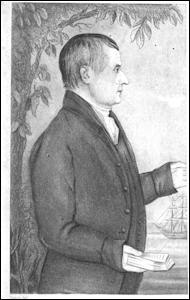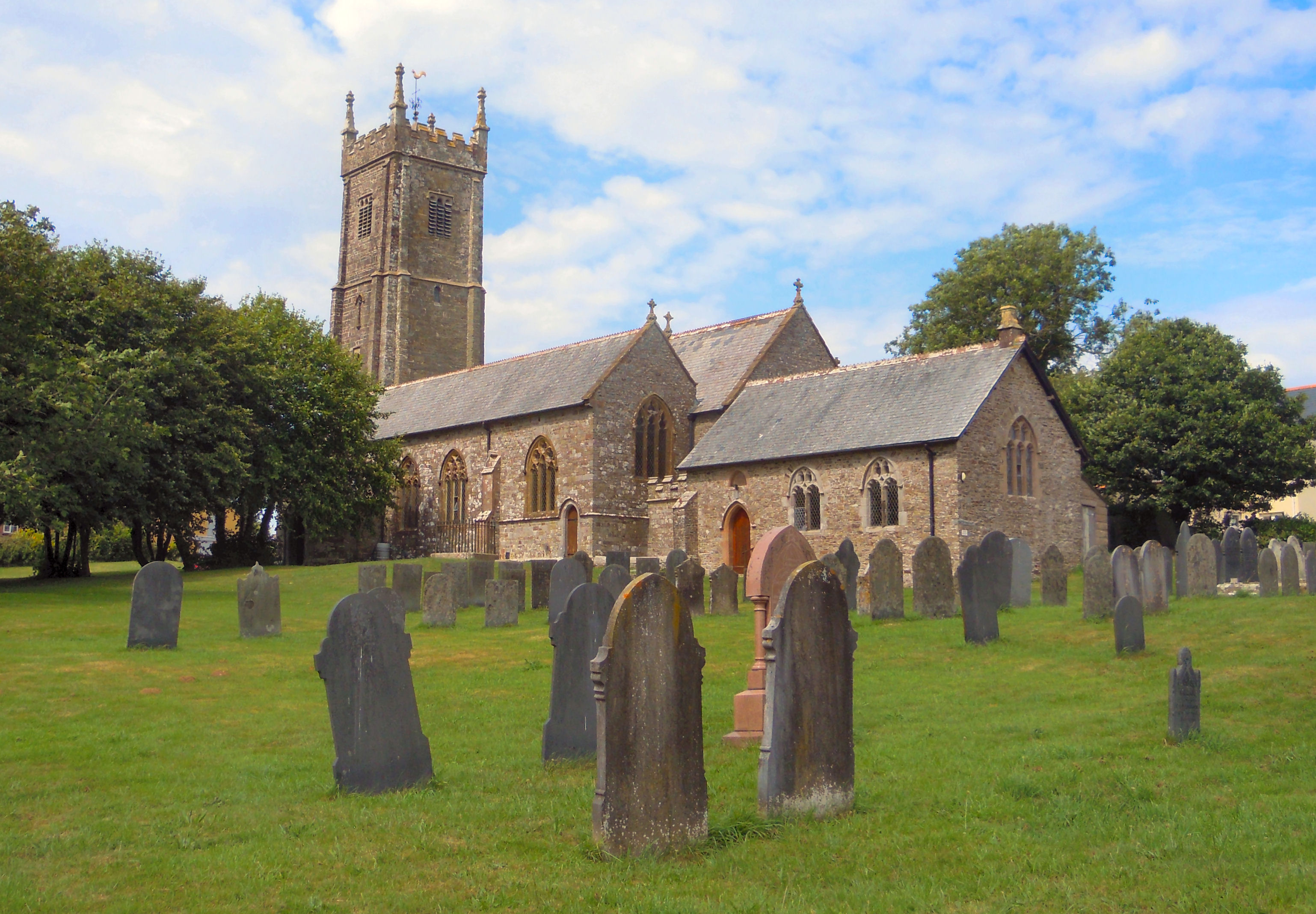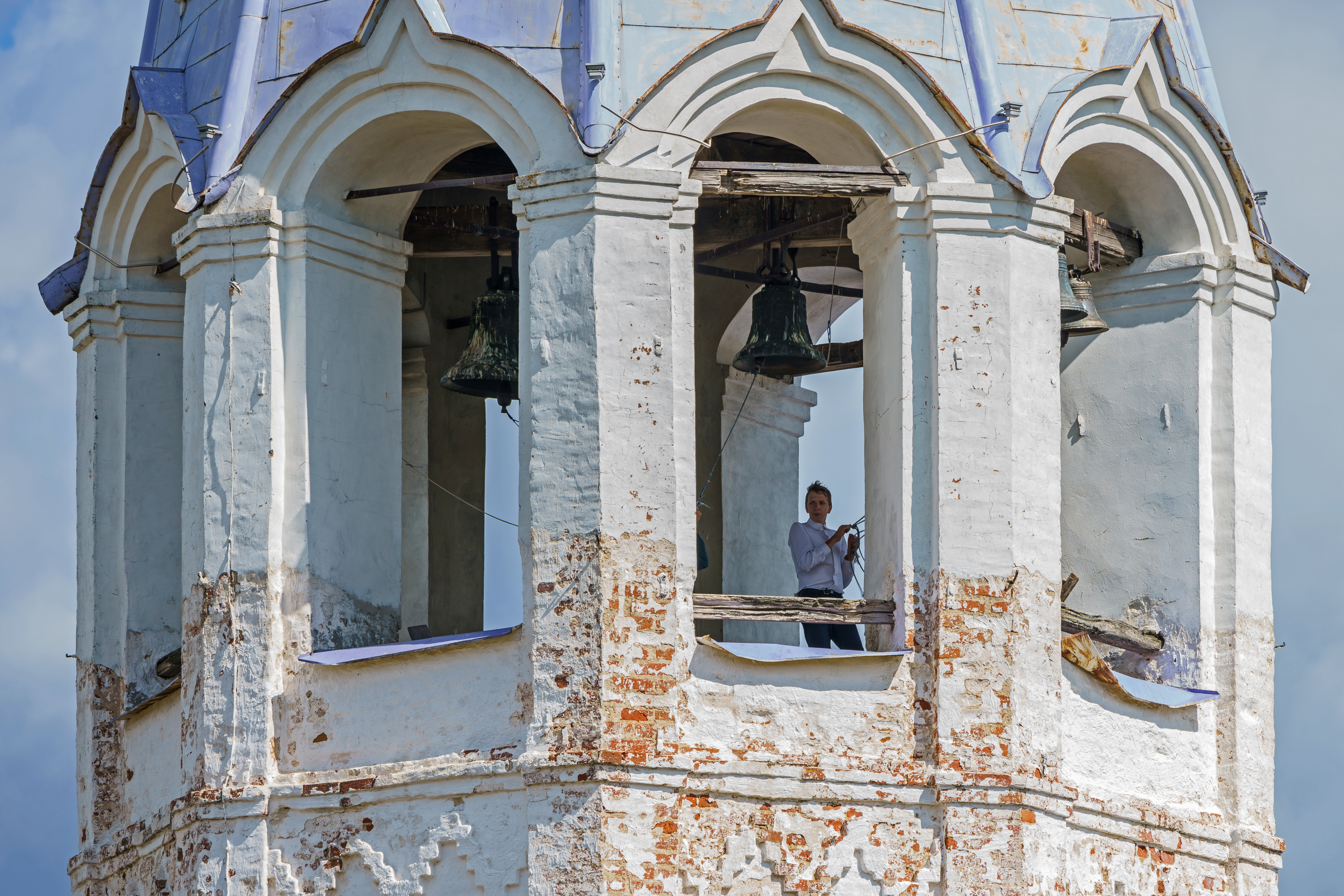|
Shebbear
Shebbear (; ) is a village and civil parish in the Torridge district in Devon, England. History Shebbear was the third-largest settlement recorded in North Devon in the Domesday Book, having 76 households, 20 of which were slaves. It was unusual in having no Lord, rather being owned directly by the King. Its pre-conquest Saxon name Sceftbeara (Spear-shaft Wood) gives a clue to its historical importance. It was later centre of Shebbear Hundred, a historic administrative area comprising the land surrounded on three sides by the River Torridge and the island of Lundy. An electoral ward exists titled Shebbear & Langtree. The 2021 census population of the parish was 1,021. The village shares its name with the Shebbeare family, who owned land in the area, and of which 18th-century political satirist John Shebbeare was a member. Religion The church of St Michael and All Angels is the Church of England parish church in the centre of the village. The nave and chancel date back to the ... [...More Info...] [...Related Items...] OR: [Wikipedia] [Google] [Baidu] [Amazon] |
John Shebbeare
John Shebbeare (1709 – 1 August 1788) was a British Tory political satirist. Life Born 1709, he was the eldest son of an attorney and corn-factor of Bideford, Devonshire. A hundred and a village in Devon, where the family had owned land, bear their name. Shebbeare was educated at the free school, Exeter, under Zachariah Mudge, and there, it is said, "gave evidence of his future eminence in misanthropy and literature." In his sixteenth year he was apprenticed to a surgeon, and afterwards set up for himself. Having, however, lampooned both his master and the members of the Exeter corporation, he in 1736 removed to Bristol, where in 1750 he was listed in land tax records as being at 10, Guinea Street, a house which is extant. He entered into partnership with a chemist in the city. In 1740, he published ''A new Analysis of the Bristol Waters; together with the Cause of Diabetes and Hectic, and their Cure, as it results from those Waters'', which was reissued in 1760. The Shebb ... [...More Info...] [...Related Items...] OR: [Wikipedia] [Google] [Baidu] [Amazon] |
Shebbear College
Shebbear College is an all-through school, all-through Private schools in the United Kingdom, private co-educational day and boarding school for pupils aged 4 – 18 situated in Shebbear, Devon, Shebbear, Devon, England. The school's 85-acre rural campus is situated in the Devon countryside. It was founded by the Bible Christian Society in 1829. History Bible Christian Church The Bible Christian Church was one of the denominations that merged in the United Methodist Church (Great Britain), United Methodist Church in 1907. Its early preachers appealed solely to the Bible in confirmation of their doctrines. The denomination arose in the agricultural districts and fishing villages of north Cornwall and Devon; a district only slightly influenced by John Wesley and the original Methodist movement. The founder of the movement was William O'Bryan, a Wesleyan Methodist Church (Great Britain), Wesleyan Methodist lay preacher of Luxulyan, Cornwall. O'Bryan commenced his labours in north ... [...More Info...] [...Related Items...] OR: [Wikipedia] [Google] [Baidu] [Amazon] |
Shebbear Hundred
Shebbear Hundred was the name of one of the thirty-two 19th century hundreds of Devon, England. The hundred of Shebbear was organized by the 13th century with many of the parishes of the ancient Domesday hundred of Merton. Accessed 25 Dec 2021.  The es in the of Shebbear were:
The es in the of Shebbear were:
[...More Info...] [...Related Items...] OR: [Wikipedia] [Google] [Baidu] [Amazon] |
Bible Christian Church
The Bible Christian Church was a Methodist denomination founded by William O'Bryan (born Bryant), a Wesleyan Methodist local preacher, on 18 October 1815 in North Cornwall. The first society, consisting of just 22 members, met at Lake Farm in Shebbear, Devon. Members of the Church were sometimes known as Bryanites, after their founder. Although founded by O'Bryan, the family Thorne came to dominate the movement as the same autocratic behaviour by Bryant that led to his separation from the Weslyan Methodists also led to him losing the leadership of the Bible Christians to James Thorne. William Bryant was its first superintendent until 1828 when, following internal strife, he was replaced by William Mason, with James Thorne as Secretary. The name was changed to the popular Bible Christians. O'Bryan left in 1832 for America where he continued to preach but no further church was founded. Early history Primarily concentrated in Cornwall and Devon, the church sent missionaries ... [...More Info...] [...Related Items...] OR: [Wikipedia] [Google] [Baidu] [Amazon] |
Devon
Devon ( ; historically also known as Devonshire , ) is a ceremonial county in South West England. It is bordered by the Bristol Channel to the north, Somerset and Dorset to the east, the English Channel to the south, and Cornwall to the west. The city of Plymouth is the largest settlement, and the city of Exeter is the county town. The county has an area of and a population of 1,194,166. The largest settlements after Plymouth (264,695) are the city of Exeter (130,709) and the Seaside resort, seaside resorts of Torquay and Paignton, which have a combined population of 115,410. They all are located along the south coast, which is the most populous part of the county; Barnstaple (31,275) and Tiverton, Devon, Tiverton (22,291) are the largest towns in the north and centre respectively. For local government purposes Devon comprises a non-metropolitan county, with eight districts, and the Unitary authorities of England, unitary authority areas of Plymouth City Council, Plymouth an ... [...More Info...] [...Related Items...] OR: [Wikipedia] [Google] [Baidu] [Amazon] |
Buckland Brewer
Buckland Brewer is a village and civil parish in the Torridge District, Torridge district of Devon, England, 4.7 miles south of Bideford. Historically the parish formed part of Hundred (country subdivision), Shebbear Hundred. According to the 2001 census it had a population of 777, increasing to 794 at the 2011 census The village is part of Waldon electoral ward. The population for this at the same census was 1,679. __TOC__ Population Historical population figures show a variable trend of increased and decreased population. Torridge District Council historical data shows the following populations: * 1801: 872 * 1901: 644 * 2001: 777 Religion The parish church of Church of St Mary and St Benedict, Buckland Brewer, St Mary and St Benedict (Church of England) is part of the benefice of the Hartland Coast Team Ministry. This falls within Deanery of Hartland, Hartland Deanery, in the Archdeaconry of Barnstaple. This is in the Diocese of Exeter. The church tower is over 500 years ... [...More Info...] [...Related Items...] OR: [Wikipedia] [Google] [Baidu] [Amazon] |
William O’Bryan
William O'Bryan (6 February 1778 – 8 January 1868) was a Methodist preacher and founder of the Bible Christian movement. Life O'Bryan was born William Bryant at Gunwen farm, Luxulyan, Cornwall. He converted to Wesleyan Methodism. In 1815 he changed his surname to O'Bryan, wishing to assert his presumed Irish ancestry. On 18 October 1815 he founded, with 22 members, the Bible Christian sect that was later known as "Bryanites". Following his split from the Wesleyans in 1815 his family moved from Kilkhampton to Badash Farm, Launceston, Cornwall, where the Bible Christians held their first two conferences. The farm is now a listed building for its unusually well preserved set of 18th-century buildings set amidst open farmland. The first Bible Christian chapel was built in Shebbear, Devon in 1817. His movement spread mainly through North Cornwall, including Padstow, Bude and Launcells. O'Bryan left the group in 1832 after a dispute over church administration, and became an itinera ... [...More Info...] [...Related Items...] OR: [Wikipedia] [Google] [Baidu] [Amazon] |
Michael (archangel)
Michael, also called Saint Michael the Archangel, Archangel Michael and Saint Michael the Taxiarch is an archangel and the warrior of God in Christianity, Judaism, and Islam. The earliest surviving mentions of his name are in third- and second-century BC Jewish works, often but not always apocalyptic, where he is the chief of the angels and archangels, and he is the guardian prince of Israel and is responsible for the care of the Israelites, people of Biblical Israel, Israel. Christianity conserved nearly all the Jewish traditions concerning him, and he is mentioned explicitly in Revelation 12:7–12, where he does battle with Satan, and in the Epistle of Jude, where the archangel and the devil dispute over the body of Moses. Old Testament and Apocrypha The Book of Enoch lists him as one of seven archangels (the remaining names are Uriel, Raguel (angel), Raguel, Raphael (archangel), Raphael, Sariel, Gabriel, and Remiel), who, in the Book of Tobit, “stand ready and ente ... [...More Info...] [...Related Items...] OR: [Wikipedia] [Google] [Baidu] [Amazon] |
Second World War
World War II or the Second World War (1 September 1939 – 2 September 1945) was a World war, global conflict between two coalitions: the Allies of World War II, Allies and the Axis powers. World War II by country, Nearly all of the world's countries participated, with many nations mobilising all resources in pursuit of total war. Tanks in World War II, Tanks and Air warfare of World War II, aircraft played major roles, enabling the strategic bombing of cities and delivery of the Atomic bombings of Hiroshima and Nagasaki, first and only nuclear weapons ever used in war. World War II is the List of wars by death toll, deadliest conflict in history, causing World War II casualties, the death of 70 to 85 million people, more than half of whom were civilians. Millions died in genocides, including the Holocaust, and by massacres, starvation, and disease. After the Allied victory, Allied-occupied Germany, Germany, Allied-occupied Austria, Austria, Occupation of Japan, Japan, a ... [...More Info...] [...Related Items...] OR: [Wikipedia] [Google] [Baidu] [Amazon] |
Devil
A devil is the mythical personification of evil as it is conceived in various cultures and religious traditions. It is seen as the objectification of a hostile and destructive force. Jeffrey Burton Russell states that the different conceptions of the devil can be summed up as 1) a principle of evil independent from God, 2) an aspect of God, 3) a created being turning evil (a '' fallen angel'') or 4) a symbol of human evil. Each tradition, culture, and religion with a devil in its mythos offers a different lens on manifestations of evil.Jeffrey Burton Russell, ''The Devil: Perceptions of Evil from Antiquity to Primitive Christianity'', Cornell University Press 1987 , pp. 41–75 The history of these perspectives intertwines with theology, mythology, psychiatry, art, and literature, developing independently within each of the traditions. It occurs historically in many contexts and cultures, and is given many different names— Satan (Judaism), Lucifer (Christianity), Bee ... [...More Info...] [...Related Items...] OR: [Wikipedia] [Google] [Baidu] [Amazon] |
Bonfire Night (UK)
Guy Fawkes Night, also known as Guy Fawkes Day, Bonfire Night and Fireworks Night, is an annual commemoration observed on 5 November, primarily in Great Britain, involving bonfires and fireworks displays. Its history begins with the events of 5 November 1605 O.S., when Guy Fawkes, a member of the Gunpowder Plot, was arrested while guarding explosives the plotters had placed beneath the House of Lords. The Catholic plotters had intended to assassinate Protestant king James I and his parliament. Celebrating that the king had survived, people lit bonfires around London. Months later, the Observance of 5th November Act mandated an annual public day of thanksgiving for the plot's failure. Within a few decades Gunpowder Treason Day, as it was known, became the predominant English state commemoration. As it carried strong Protestant religious overtones it also became a focus for anti-Catholic sentiment. Puritans delivered sermons regarding the perceived dangers of poper ... [...More Info...] [...Related Items...] OR: [Wikipedia] [Google] [Baidu] [Amazon] |
Bell-ringer
A bell-ringer is a person who rings a Bell (instrument), bell, usually a church bell, by means of a rope or other mechanism. Despite some automation of bells for random swinging, there are still many active bell-ringers in the world, particularly those with an advanced ringing tradition such as Full circle ringing, full-circle or Russian ringing, which are artistic and skilled performances difficult to automate. The term ''campanologist'' is popularly misused to refer to a bell-ringer, but this properly refers to someone engaged in the study of bellswhich is known as campanology. Although in some places carillons are used to sound bells, they are "played" by carillonneurs, not by bell-ringers, and are associated with the ringing of tunes in the Western musical tradition. Full-circle ringing English full-circle ringing In England, it is estimated there are about 40,000 bell-ringers ringing on ring of bells, rings of bells in the English Full circle ringing, full-circle style. ... [...More Info...] [...Related Items...] OR: [Wikipedia] [Google] [Baidu] [Amazon] |




